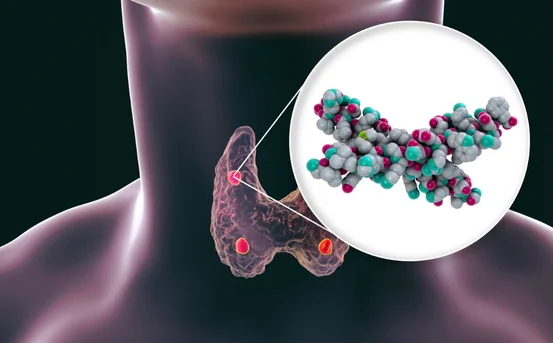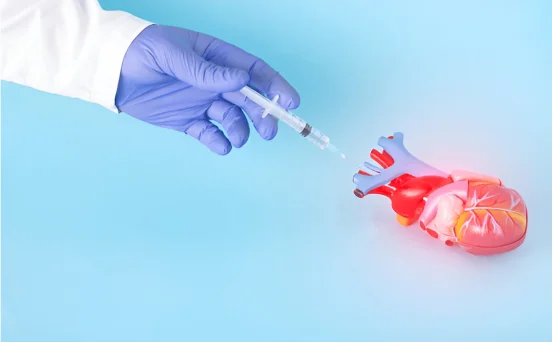Introduction
Arrhythmia refers to an abnormal rhythm of the heart either too fast, too slow, or irregular. The heart’s electrical system, which controls the timing of the heartbeat, may malfunction due to structural changes, injury, or disease. While many arrhythmias are harmless and managed with medication or lifestyle changes, some forms can become serious or life-threatening, requiring surgical intervention.
Arrhythmia surgery is considered when the condition causes significant symptoms, does not respond to medication or catheter ablation, or presents a high risk for complications such as stroke or sudden cardiac arrest. Recognizing the symptoms that suggest a patient may benefit from surgical treatment is crucial for timely care and better outcomes.
Symptoms of Arrhythmia Surgery
- Palpitations :- They are often the first noticeable sign that something is wrong with the heart’s rhythm. Patients may feel their heart fluttering, skipping beats, racing, or pounding. These episodes can be brief or last for several minutes or hours. When palpitations occur frequently or become persistent, they can cause significant anxiety and interfere with daily life. In many cases, especially if medications are ineffective, these sensations suggest an arrhythmia that may require surgical intervention to stabilize the rhythm.
- Dizziness or lightheadedness :- It is another critical symptom that suggests the heart is not pumping efficiently due to an irregular rhythm. When the heartbeat is too slow (bradycardia) or too fast (tachycardia), blood flow to the brain may be reduced. This insufficient perfusion results in episodes where a person feels faint, disoriented, or unstable. If dizziness becomes recurrent or unpredictable, and non-surgical methods like pacemakers or medications do not suffice, surgery may be recommended to prevent further risk of falls or accidents.
- Fainting or syncope :- It is one of the most alarming signs of arrhythmia. It occurs when the brain is temporarily deprived of oxygen due to a pause or sharp drop in heart rate. Sudden fainting, especially with no clear cause, is often a red flag for serious rhythm disturbances such as ventricular tachycardia or complete heart block. Individuals with repeated syncope are typically evaluated for surgical options, such as the implantation of a pacemaker or defibrillator, to prevent dangerous recurrences and protect against sudden cardiac arrest.
- Shortness of breath :- It is especially during physical activity or even at rest, can be an indication that the heart is not pumping effectively due to arrhythmia. Irregular rhythms may lead to pooling of blood in the lungs or insufficient oxygen circulation to the tissues. This can cause a sensation of breathlessness, even when a person is not exerting themselves. In patients with conditions like atrial fibrillation or flutter, surgical procedures like the maze procedure may be recommended to restore proper rhythm and improve breathing function.
- Fatigue and weakness :- They are often under-recognized but significant symptoms of chronic arrhythmia. When the heart’s pumping action is disrupted, the body receives less oxygen and nutrients. Patients may find it difficult to perform normal activities like walking, climbing stairs, or even standing for long periods. The fatigue may be constant and does not improve with rest. Surgical correction of the rhythm can help restore energy levels by ensuring efficient blood circulation and oxygen delivery throughout the body.
- Chest pain or discomfort :- It can occur when the heart rhythm is irregular, especially in conditions like supraventricular tachycardia or atrial fibrillation. This discomfort may not always be due to a heart attack but instead results from increased heart workload and poor oxygenation. When chest pain is recurrent and directly associated with arrhythmic episodes, it may signal a need for surgery, particularly if other treatments fail to relieve the symptom or if there’s risk of myocardial strain.
- Exercise intolerance :- It is another symptom that can point toward arrhythmias severe enough to require surgery. Patients may notice a rapid heartbeat during mild physical activity, become short of breath easily, or feel their heart rate remains elevated long after the exertion ends. These signs suggest the heart is not coordinating properly with the body’s activity demands. Surgical correction allows the heart to beat regularly and adapt better to physical effort, improving stamina and restoring confidence in performing daily tasks.
- Swelling in the legs or abdomen :- It is known as edema, may occur in patients whose arrhythmias lead to heart failure or poor circulation. As the irregular rhythm weakens the heart’s pumping capacity, fluid may accumulate in the lower extremities, abdomen, or even the lungs. This symptom is particularly common in cases where atrial fibrillation or ventricular arrhythmia has persisted for a long time. Surgery can help by correcting the rhythm, reducing fluid retention, and easing the burden on the heart.
- Anxiety :- It can also be triggered by persistent arrhythmia. Patients often describe a fear of sleeping because of episodes of rapid heartbeat or skipped beats at night. This emotional stress may compound physical symptoms and lead to insomnia, depression, or panic attacks. The unpredictable nature of arrhythmia often causes psychological distress, which can be relieved once the rhythm is stabilized surgically.
- Symptoms that do not respond to medication :- It is from one of the strongest indications for surgical management. Many arrhythmias are initially managed with beta-blockers, calcium channel blockers, or antiarrhythmic drugs. However, these may lose effectiveness over time or produce side effects that limit their use. When arrhythmia remains uncontrolled despite optimal drug therapy, surgical options like the maze procedure, AV node ablation, or device implantation may be considered for long-term relief.
- Blood clots:- A history of stroke or blood clot may also indicate the need for arrhythmia surgery, especially in patients with atrial fibrillation. Irregular heart rhythms can cause blood to pool and form clots, which may travel to the brain and cause a stroke. Surgical procedures that restore normal rhythm or remove the left atrial appendage (where clots tend to form) can significantly reduce the risk of future strokes.
Conclusion
Recognizing the symptoms that suggest the need for arrhythmia surgery is essential to prevent serious and potentially fatal complications. While mild arrhythmias may be managed with lifestyle changes or medication, more severe cases require surgical intervention to restore a stable heart rhythm, improve blood flow, and enhance overall quality of life.
From palpitations and dizziness to fainting spells and persistent fatigue, these symptoms point to deeper electrical dysfunctions within the heart. When these issues become chronic, worsen over time, or fail to respond to conservative treatments, surgery becomes a safe and effective next step.
Surgical procedures like the maze operation, AV node ablation, or the implantation of pacemakers and defibrillators offer long-term solutions with excellent success rates. By acting early and understanding the signals your heart is sending, you or your loved one can avoid complications and take a decisive step toward better heart health and a more active, confident life.























